As demand for processed foods grows, the application of centrifugal pumps in food industry becomes essential for maintaining smooth operations and preserving product quality across various production stages.
The global market for food-grade centrifugal pumps is projected to grow steadily at around 5.4% annually through 2028. This growth is driven by advancements in centrifugal pump technology and their expanding use in ingredient transfer, mixing, packaging, and cleaning processes within the food industry.
This guide highlights key application of centrifugal pumps in food industry and important factors to consider for effective food processing.
Key Takeaways
- Centrifugal pumps move food liquids using a rotating impeller, converting mechanical energy into fluid flow with gentle handling.
- Different types of centrifugal pumps serve various food industry needs, including single-stage, multi-stage, sanitary, and magnetic drive designs.
- The application of centrifugal pumps in food industry ensures gentle, efficient liquid transfer, miixng, blending using rotating impellers.
- Food-grade materials and sanitary construction ensure pumps comply with hygiene regulations like FDA and USDA standards.
- Proper pump selection depends on fluid viscosity, temperature, flow rate, and cleaning requirements such as Clean-in-Place (CIP) compatibility.
Before exploring the application of centrifugal pumps in food industry, it is important to understand how these pumps operate.
Understanding Centrifugal Pumps in Food Industry Applications

Centrifugal pumps create flow by spinning an impeller inside a casing, accelerating liquid outward to generate pressure. This design supports continuous, smooth fluid movement, crucial for processing liquids without damaging delicate ingredients.
Compared to positive displacement pumps, centrifugal pumps offer advantages in volume handling and lower maintenance due to fewer moving parts, making them ideal for high-throughput food production environments.
Here are the key strengths of using centrifugal pumps in food processing:
- Compact and modular design enabling quick installation and tool-free maintenance to minimize production downtime.
- Capability to pump fluids with viscosities ranging from 1 cP (water-like) up to 10,000 cP (thick sauces and creams) without compromising flow rate or product integrity.
- Sanitary construction featuring polished 316L stainless steel surfaces and crevice-free welds to inhibit bacterial growth and meet FDA and EHEDG hygiene standards.
- Full compatibility with Clean-in-Place (CIP) and Sterilize-in-Place (SIP) systems, allowing effective cleaning cycles without pump disassembly.
- Use of corrosion-resistant materials and seals resistant to food acids, alkalis, and common detergents, ensuring longevity and reliable performance in harsh food processing environments.
To fully grasp their capabilities, reviewing the key technical specifications helps clarify how these pumps meet rigorous food industry demands.
Once the technical foundation is set, we can look at the different types of centrifugal pumps commonly used in food processing.
Types of Centrifugal Pumps Used in the Food Industry
As the food processing industry grows rapidly, with a market projected to exceed $1.5 trillion by 2027, you will need pumps that meet strict hygiene and operational standards.
Different types of centrifugal pumps are designed to handle your specific food production needs, helping you maintain efficiency and safety throughout your processes. The main types include both metallic and non-metallic centrifugal pumps:
Knowing the pump types leads naturally to understanding their practical applications across various stages of food production, demonstrating how they contribute to product quality and operational efficiency.
Application of Centrifugal Pumps in Food Industry
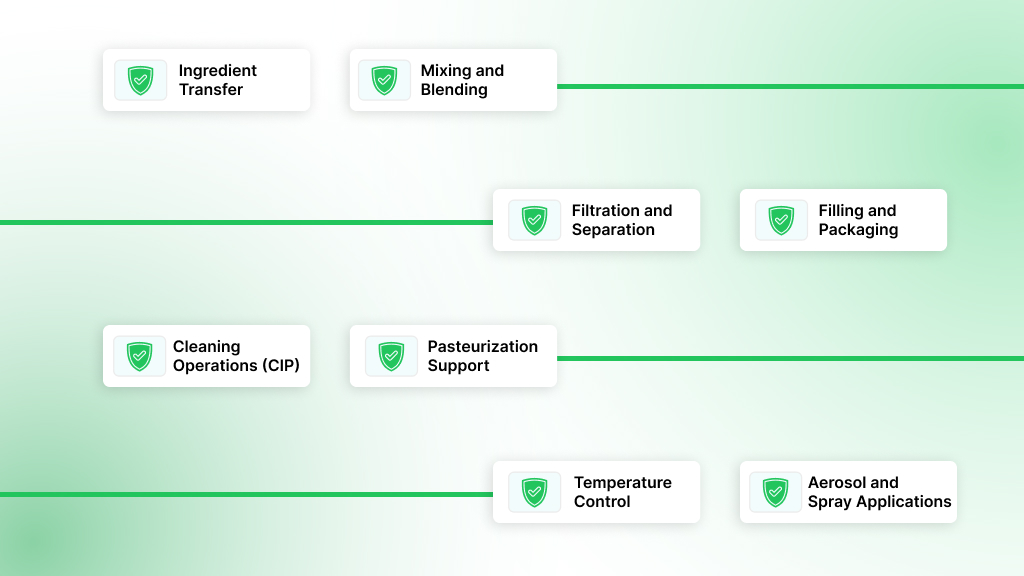
In large-scale food and beverage operations, even minor inefficiencies can quietly erode margins and brand reputation.
Centrifugal pumps, though often unnoticed in daily operations, are among the assets that maintain consistent product quality, ensure compliance with safety regulations, and sustain production schedules without interruptions.
Here’s a detailed overview of key application of centrifugal pumps in food industry that ensure efficient and hygienic processing:
1. Ingredient Transfer
Centrifugal pumps transport raw liquids like milk, oils, and juices between tanks and processing lines with flow rates typically ranging from 10 to 500 m³/h.
- Their low shear design minimizes damage to delicate fluids, preserving texture and nutritional qualities.
- Operating pressures usually range between 1 and 6 bar to ensure smooth, continuous transfer without aeration.
Example: In dairy processing, centrifugal pumps move raw milk from refrigerated tanks to pasteurizers, protecting delicate milk proteins and preventing oxidation.
2. Mixing and Blending
These pumps maintain consistent flow rates (20–300 m³/h) into mixers and blenders, enabling uniform ingredient distribution.
By delivering pulsation-free flow at controlled pressures (up to 4 bar), they promote thorough mixing and emulsification without causing foam or phase separation.
Example: In salad dressing manufacturing, these pumps circulate oil and vinegar mixtures through inline blenders to form stable emulsions with consistent flavor and appearance.
3. Filtration and Separation
Centrifugal pumps circulate liquids through fine filters or separators, providing stable flow rates from 15 to 200 m³/h and pressures up to 5 bar.
This ensures efficient removal of solids and particulates, helping maintain clarity and quality without overloading filtration membranes.
Example: Juice producers use centrifugal pumps to push raw juice through fine filters, removing pulp and sediment while preserving fresh flavor.
4. Filling and Packaging
Precision pumps regulate flow rates between 5 and 100 m³/h to supply filling machines with minimal pulsation, maintaining hygienic conditions and volume accuracy within ±1%.
Operating pressures are controlled between 1 and 3 bar to avoid foaming and product degradation during filling.
Example: Bottling plants use these pumps to fill flavored waters, maintaining product hygiene and consistent fill volumes at high speeds.
5. Cleaning Operations (CIP)
Pumps designed for CIP circulate alkaline or acidic cleaning solutions at flow rates of 10–300 m³/h and pressures from 2 to 6 bar through processing equipment.
These high flow and pressure rates ensure thorough cleaning of pipelines and tanks without disassembly, reducing downtime and maintaining food safety standards.
Example: Cheese production facilities rely on centrifugal pumps to circulate hot alkaline cleaning fluids through pipelines and vats, removing residues and preventing microbial contamination.
6. Pasteurization Support
Centrifugal pumps maintain controlled flow rates required for effective heat treatment without compromising fluid quality.
- Handle fluids at elevated temperatures (up to 90°C or more).
- Ensure steady flow to optimize heat exchanger efficiency.
- Support pathogen reduction while preserving product attributes.
Example: Pumping milk through plate heat exchangers during pasteurization to ensure uniform heating.
7. Temperature Control and Cooling
These pumps circulate chilled liquids or cooling water to maintain precise temperatures essential for product stability.
- Provides low-turbulence flow suitable for cooling fluids.
- Constructed with corrosion-resistant materials for chilled environments.
- Supports consistent temperature regulation during processing.
Example: Circulating glycol coolant in beverage production to maintain stable fermentation temperatures.
8. Aerosol and Spray Applications
Centrifugal pumps feed liquids to atomizers or spray nozzles for coating, flavoring, or preservative applications, ensuring uniform coverage.
- Deliver smooth, continuous flow to prevent nozzle clogging.
- Adapt to thin or moderately viscous liquids used in sprays and coatings.
- Maintain consistent pressure for even distribution.
Example: Applying flavor sprays onto snack foods for consistent taste and appearance.
After covering the applications of centrifugal pumps in the food industry, the focus now shifts to the important checks that ensure efficient performance and compliance with industry standards.
Essential Checks for Using Centrifugal Pumps in Food Industry
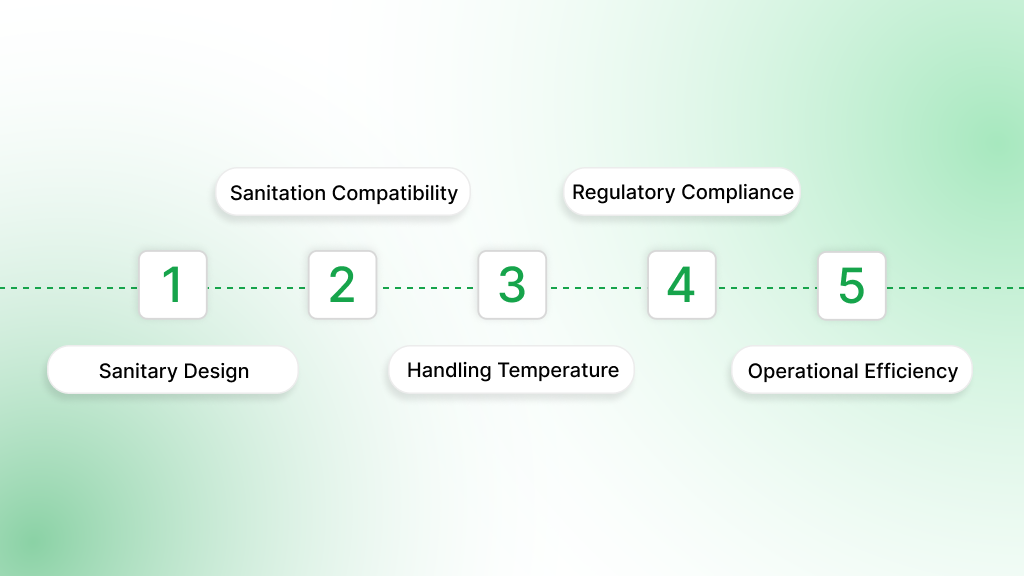
In food processing, even the smallest pump detail can affect safety and quality. From hygiene to operating conditions, several factors influence a centrifugal pump’s performance. Before putting a centrifugal pump to work, review these important checks:
Material and Sanitary Design
- Wetted parts should be constructed from FDA and ANSI-compliant stainless steel grades such as 316L or 304L for corrosion resistance and durability.
- Surfaces must be polished to a roughness (Ra) below 0.8 microns to minimize microbial adhesion.
- Hygienic seals, including mechanical or lip seals, prevent leakage and contamination.
- Pump designs should allow quick disassembly without specialized tools for easy cleaning and inspection.
Cleaning and Sanitation Compatibility
- Pumps must be compatible with Clean-in-Place (CIP) and Sterilize-in-Place (SIP) systems.
- Materials and seals should withstand cleaning agents like caustics and acids at elevated temperatures (up to 90°C or higher).
- Internal flow paths should be smooth and free of dead zones to reduce biofilm formation.
- CIP and SIP compatibility reduces downtime by enabling cleaning without pump disassembly.
Handling Temperature and Viscosity
- Pump components must tolerate operating temperatures typically ranging from 0°C to 120°C or more, depending on the process.
- Hydraulic design should support fluid viscosities from thin liquids (~1 cP) to thick syrups or pastes (several thousand cP).
- Open or semi-open impeller designs aid in handling particulates and shear-sensitive products.
- Pumps should prevent cavitation and maintain flow stability under varying viscosities.
Regulatory Compliance
- Pumps must conform to standards such as FDA, USDA, EHEDG, and 3-A Sanitary Standards.
- Proper certification and documentation ensure hygiene, safety, and audit readiness.
- Compliance supports meeting local and international food safety regulations.
Maintenance and Operational Efficiency
- Regular monitoring of vibration, seal condition, and flow rates helps detect early wear or faults.
- Operating pumps near their Best Efficiency Point (BEP) minimizes energy consumption and mechanical stress.
- Use corrosion-resistant alloys and high-quality bearings to extend maintenance intervals.
- Modular pump designs enable seal and impeller replacement without full pump removal, reducing downtime.
After reviewing the key considerations and application of centrifugal pumps in food industry, the next step is selecting the one that best meets your operational needs.
How to Choose a Centrifugal Pump for Food Industry Needs?
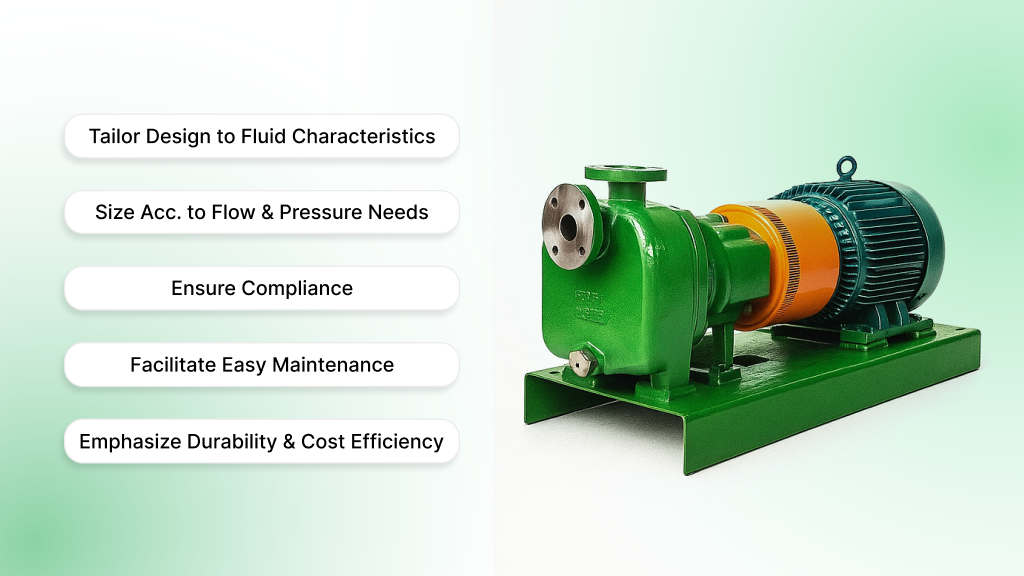
The reliability, sanitation, and safety of food manufacturing depend significantly on choosing the appropriate centrifugal pump. Selecting a pump is not just about matching product specs; it requires evaluating how the pump will perform under real food processing conditions.
To make an informed choice, consider these key factors:
- Tailor Design to Fluid Characteristics: Use FDA-approved stainless steel (e.g., 316L), corrosion-resistant alloys, and open or semi-open impellers for fluids above 90°C, viscous, or containing particulates.
- Size According to Flow and Pressure Needs: Select pump size, impeller diameter, and stage count to meet required flow rates and pressures, ensuring operation within 80–110% of BEP and adequate NPSH to avoid cavitation.
- Ensure Compliance with Sanitary and Cleaning Standards: Employ smooth, polished surfaces (Ra < 0.8 μm), hygienic seals, and pumps compatible with CIP/SIP systems and resistant to caustic and acidic cleaners.
- Facilitate Easy Maintenance and Accessibility: Opt for modular designs that allow seal, bearing, and impeller replacement without full disassembly; standardize pump models to streamline maintenance.
- Emphasize Durability and Cost Efficiency: Choose energy-efficient pumps with low vibration (<4.5 mm/s RMS) and corrosion-resistant materials to extend service intervals and reduce downtime.
Is inefficient pump choice slowing your food production? Find out how expert advice and customized centrifugal pump solutions can enhance your operations and help maintain food safety standards.
Chemitek Solutions for Food Industry Fluid Handling
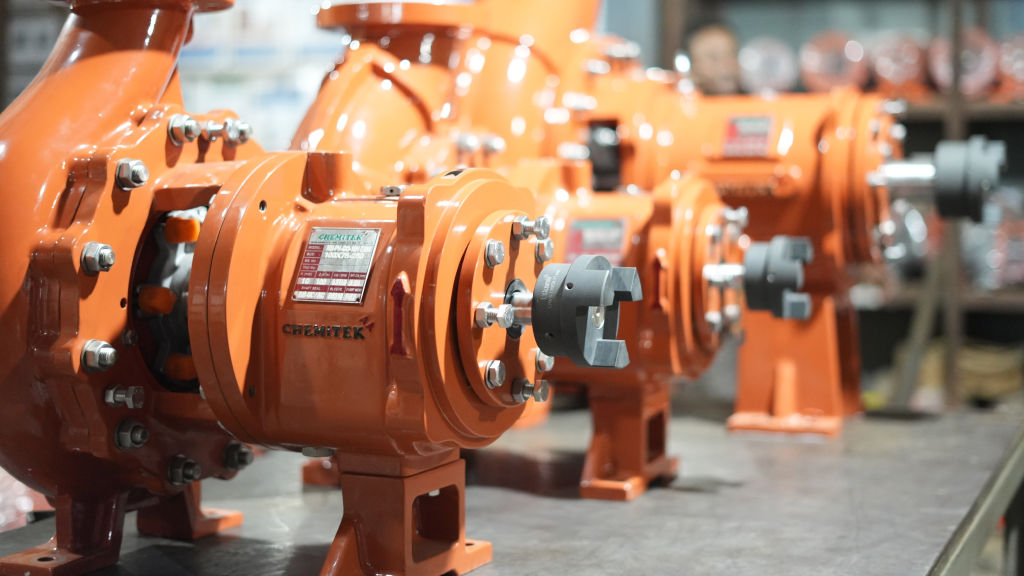
At Chemitek Process Equipment Pvt. Ltd., we deliver centrifugal pumping systems engineered to match the hygiene, efficiency, and reliability requirements of food and beverage companies. These pumps handle liquids such as dairy products, juices, syrups, sauces, and purees with consistent flow and gentle handling to preserve product integrity.
Our pumps are manufactured using stainless steel and high-grade materials that resist corrosion, simplify cleaning, and meet global food safety regulations. With precise flow and pressure control, they support every stage of production, including transfer, mixing, and filling, ensuring smooth, uninterrupted operations.
We offer complete support from pump specification and system design to installation and after-sales service, helping companies achieve reliable performance, reduced downtime, and optimal operating costs.
For personalized centrifugal pump solutions that meet your company’s food processing needs, connect with Chemitek today.
FAQs
1. In which areas of food processing are centrifugal pumps used?
Centrifugal pumps are widely used for transferring liquids during production, mixing ingredients, filling and packaging, as well as circulating cleaning solutions in Clean-in-Place (CIP) systems.
2. Are centrifugal pumps capable of handling thick or particulate-laden food products?
Absolutely. With appropriate impeller designs and durable, corrosion-resistant materials, these pumps can effectively manage viscous fluids and liquids containing small solids without clogging.
3. How do centrifugal pumps support hygiene standards in food processing?
They feature smooth, easy-to-clean surfaces, sanitary seals, and compatibility with Clean-in-Place (CIP) and Sterilize-in-Place (SIP) cleaning processes, allowing thorough sanitation without disassembly.
4. What is the advantage of using open or semi-open impellers in food applications?
Open or semi-open impellers minimize the risk of blockage when pumping fluids that contain solids, ensuring smooth and continuous flow, especially for products like fruit purees or dairy mixtures.
5. Do these pumps comply with food safety regulations?
Yes. Pumps built from FDA-approved materials and designed according to EHEDG or 3-A sanitary standards comply with stringent global food safety and hygiene regulations.
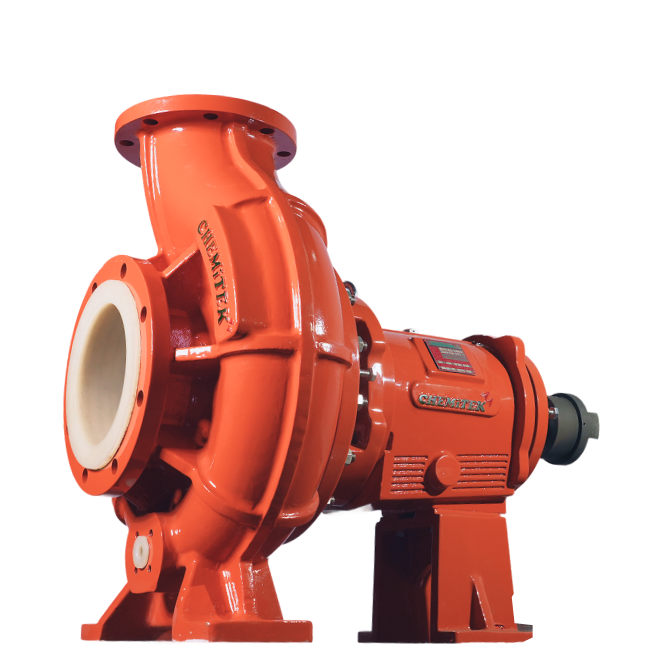
Latest posts
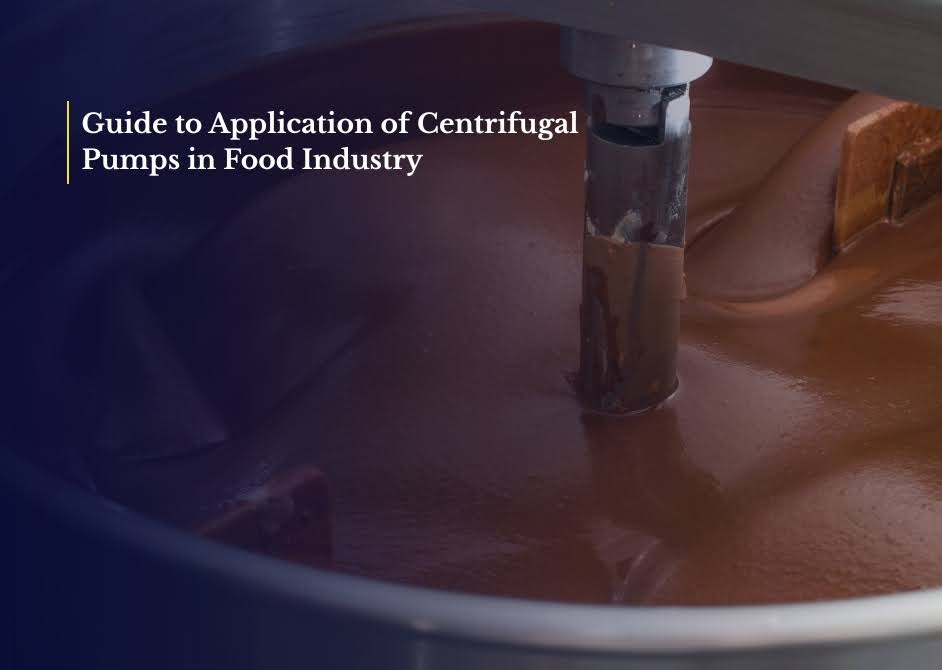
Guide to Application of Centrifugal Pumps in Food Industry
Ready to Upgrade Your Process Operations?